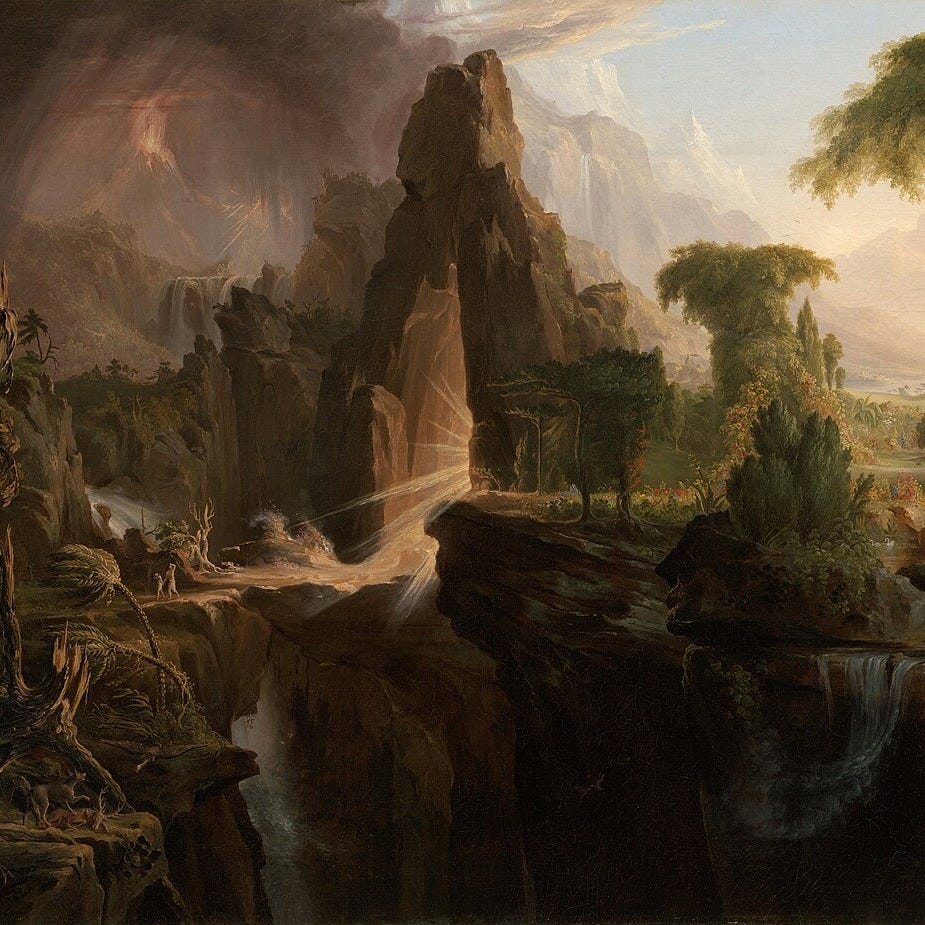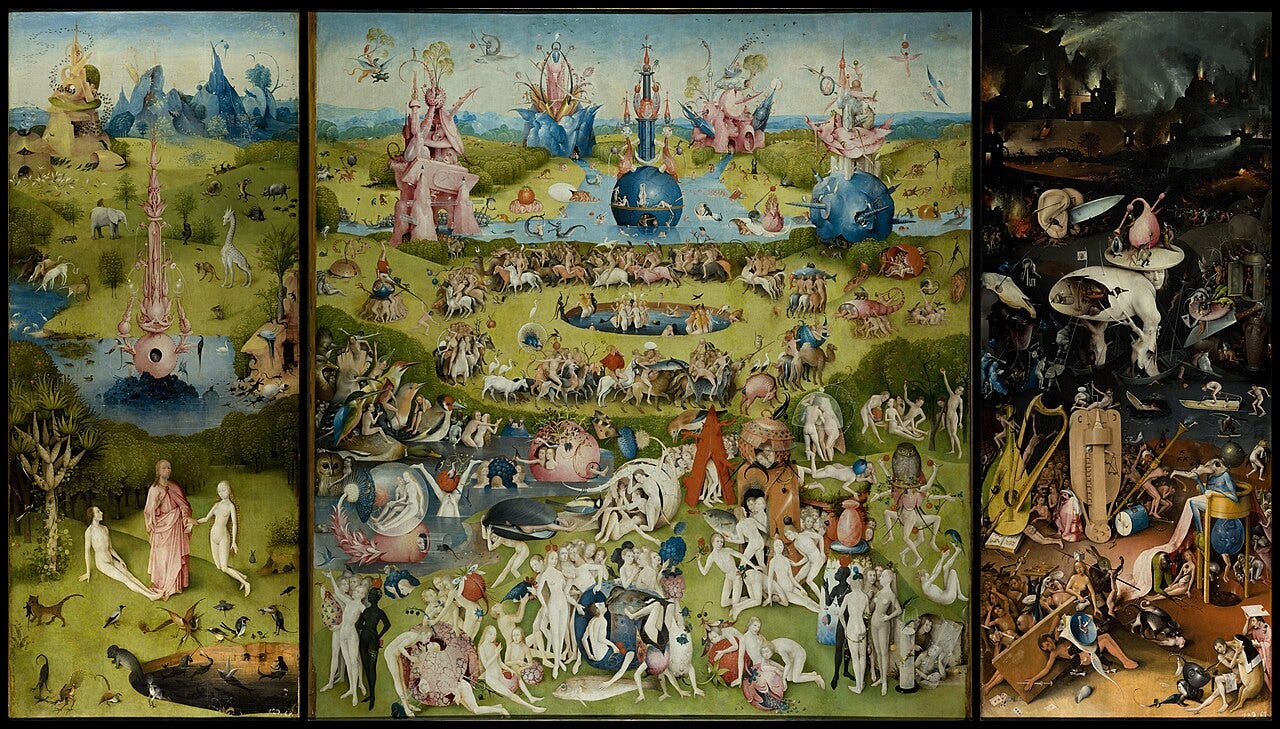The Hidden Story in the New Testament
How ancient parallels offer you new life.
You know the story of Adam and Eve, but you may not know the New Testament also has an Adam and Eve. In fact, Christians would hold that the New Testament is actually a retelling of the Genesis story. It is an amazing claim that shows the interconnectivity between thousands of years of biblical authorship.
But this is not reducible to some academic claim. It is a personal invitation to you.
Understanding the New Testament as a Genesis retold invites you to become part of the story. Christians would hold that the Christian life isn’t like a play you join, but rather it is like you are an actor who mid-play finally discovers the script.
There is a New Genesis, a New Adam, a New Eve, and an invitation to become a new you.
This is more than just an ancient way to read ancient tales—it reveals a pattern of spiritual re-creation, your own personal primordial waters of creation, from which you can arise anew.
Reminder: this is a teaser of our members-only deep dives.
To support our mission and get our premium content every week, upgrade for a few dollars per month. You’ll get:
New, full-length articles every Tuesday and Friday
The entire archive of members-only essays
Access to our paid subscriber chat room
The Secret of the Beginning
The lessons of the Bible can be very subtle and only available for the attentive reader. Christians hold that one of the biggest clues that the New Testament is a new Genesis is the opening of the Gospel according to St. John. It reads:
“In the beginning was the Word, and the Word was with God, and the Word was God. He was in the beginning with God; all things were made through him, and without him was not anything made that was made” (John 1:1-3).
And now look at the first verse in the entire Bible, from the book of Genesis:
“In the beginning God created the heavens and the earth. The earth was without form and void, and darkness was upon the face of the deep; and the Spirit of God was moving over the face of the waters.” (Genesis 1:1-2).
Both start “in the beginning,” which is an intentional allusion on St. John’s part to make the reader think of Genesis. But why?
One clue rests with the term “Word.” St. John chose this term carefully, as it represents a rich tradition in Hellenistic thought. The Greek term underneath “Word” is Logos, which represents a deep, multivalent philosophy. It can mean the “reason of a thing,” “the account of something,” or “the ordering principle of a thing.” In the Republic, Socrates is seeking the logos of justice—to understand its essence and nature. In his Rhetoric, Aristotle will speak of logos as an appeal to the intellect, a rational argument. The Hellenized Jewish thinker, Philo of Alexandria, speaks of the Logos as an intermediary between God and man, an embodiment of wisdom and reason. In English, terms like “logic” and the suffix “-logy,” like biology and zoology, are drawn from logos.
St. John is the inheritor of a rich, multifaceted Hellenistic tradition of the word logos, and he makes a unique claim: the Logos is God - but also something that is with God. Christians hold that the Logos is the Second Person of the Blessed Trinity, the Son. St. John, by calling him Logos, claims that this person of the Trinity is the rational order of all creation, the very logic of being, and the account of all things. It is through the Logos that all things were made—the very logic of creation itself (John 1:1).
Yet, St. John makes another fascinating claim.
St. John teaches: “And the Logos became flesh and dwelt among us” (John 1:14). In other words, he is teaching that the Logos is Jesus Christ, the Logos incarnate. St. Paul makes a similar claim when he states:
In Jesus “all things were created, in heaven and on earth, visible and invisible, whether thrones or dominions or principalities or authorities—all things were created through him and for him. He is before all things, and in him all things hold together (Col 1:16-17).
Jesus is the Logos made flesh, the Second Person of the Blessed Trinity incarnate. He is the very order of reality, the reason of all being by which all was made and is still held in being. The ordering principle of all Creation has entered Creation as a man.
The Painter has entered the painting - and he has come to bring renewal.
Overall, St. John uses an allusion to Genesis to instruct his readers that the New Testament is a new Genesis. The same Logos that gave structure and existence to reality has now entered reality as a man. St. John’s allusion at the beginning of his Gospel is a sign that the New Testament must be seen as a new Genesis to be read correctly.
As beautiful and rich as St. John’s reference to Genesis is, it is only the beginning of seeing the New Testament as a story of the re-creation of mankind.
The Mystery of the New Adam
Who is this Logos made flesh? St. Paul offers a profound teaching: the Logos-incarnate, Jesus Christ, is the New Adam (Rom 5:12-21; I Cor 15:20-28, 45-50; Col 1:15-20). If the New Testament is a new Genesis, then it has its new Adam in Jesus Christ.
But what is the purpose of the new or second Adam?
Christians teach that humanity is like a single body, and its head is Adam. When Adam committed the original sin, the entire body fell into sin. In this sin, which can be viewed as a disease, man lost grace—participating in the divine life—and his nature was wounded. In other words, under the headship of Adam, man not only lost his capacity to ascend to God but also suffered a defect to his human nature.
What the body of humanity needed was a new head, a new Adam. Think of it this way. To decapitate means to remove the head, but to recapitulate means to replace the head. Jesus Christ, the new or second Adam, came to recapitulate humanity, to give humanity a new head from which man’s nature would be both healed and elevated by grace. It opens the path for man’s ascension and participation in the divine.
The New Testament is a new Genesis, a story of recapitulation: the new Adam makes all things new. This is why Christians emphasize becoming part of the “body of Christ,” because it is by being placed under the headship of Jesus Christ that one is saved. And the other name for the Body of Christ is the Church.
But wait… the story of Genesis is not just Adam. What about Eve, the Tree of the Knowledge of Good and Evil, the fruit, the snake, and everything else?
They are all in the New Testament too—and so is your invitation to personal re-creation.
Keep reading with a 7-day free trial
Subscribe to The Ascent to keep reading this post and get 7 days of free access to the full post archives.




